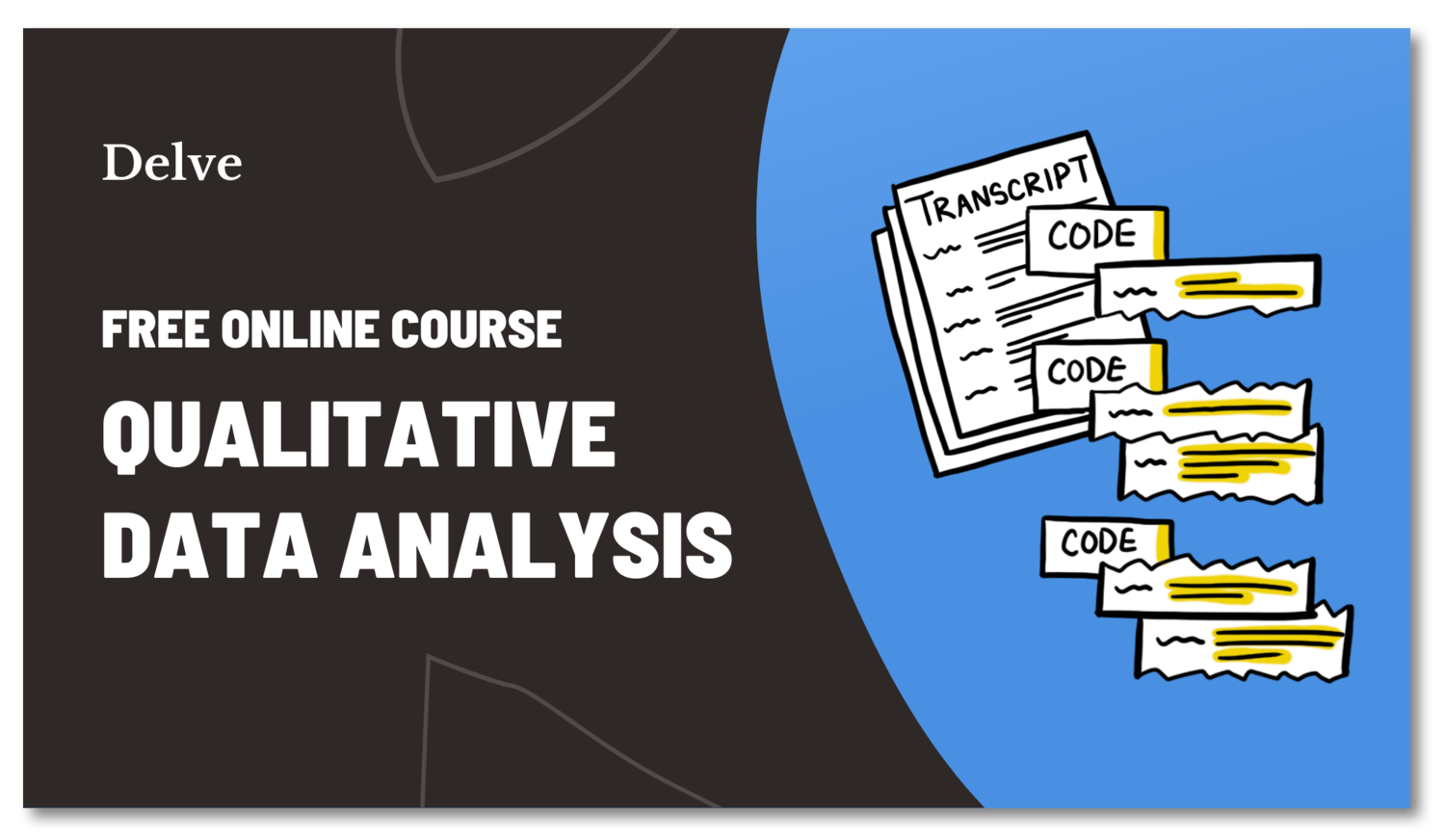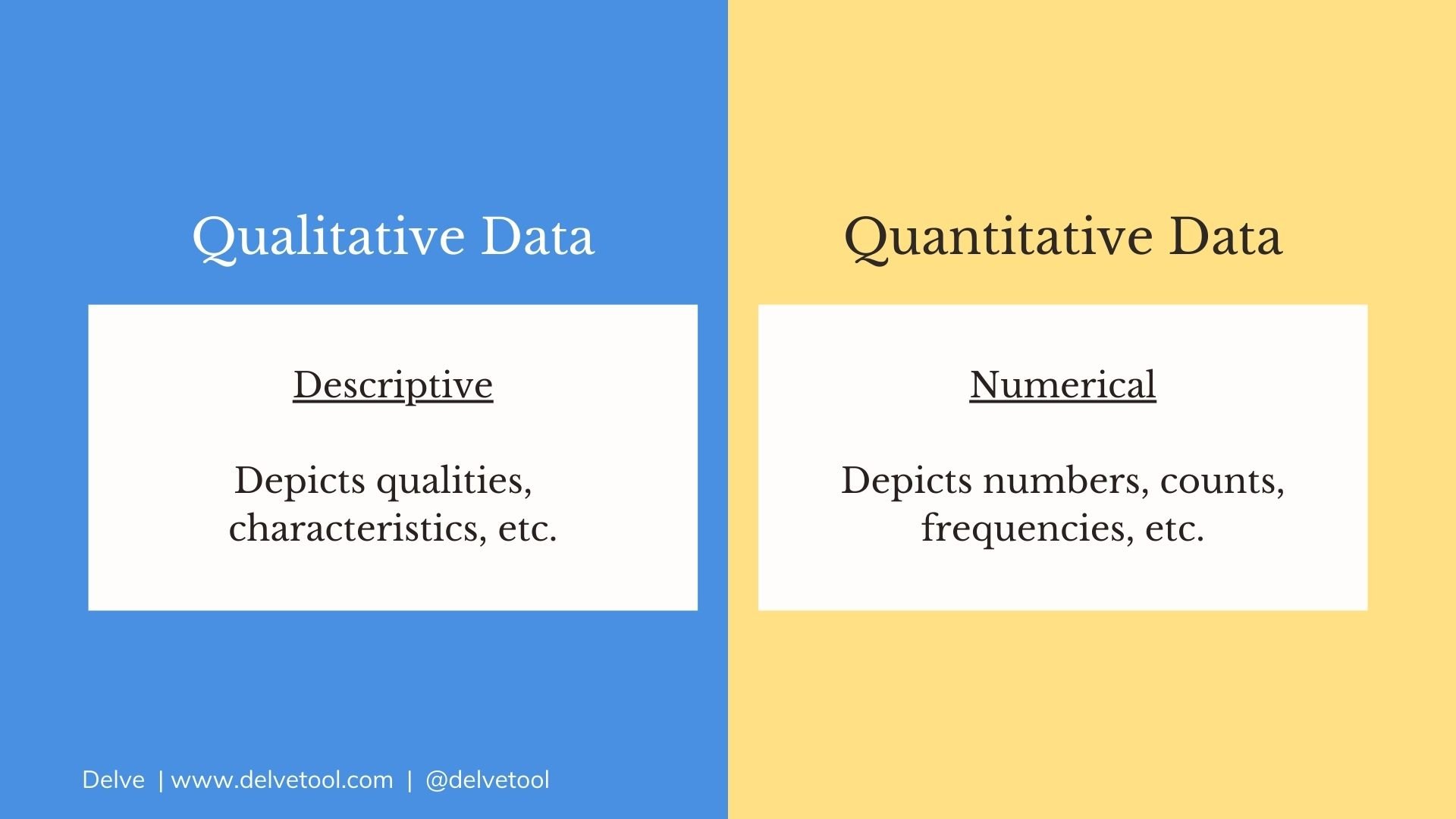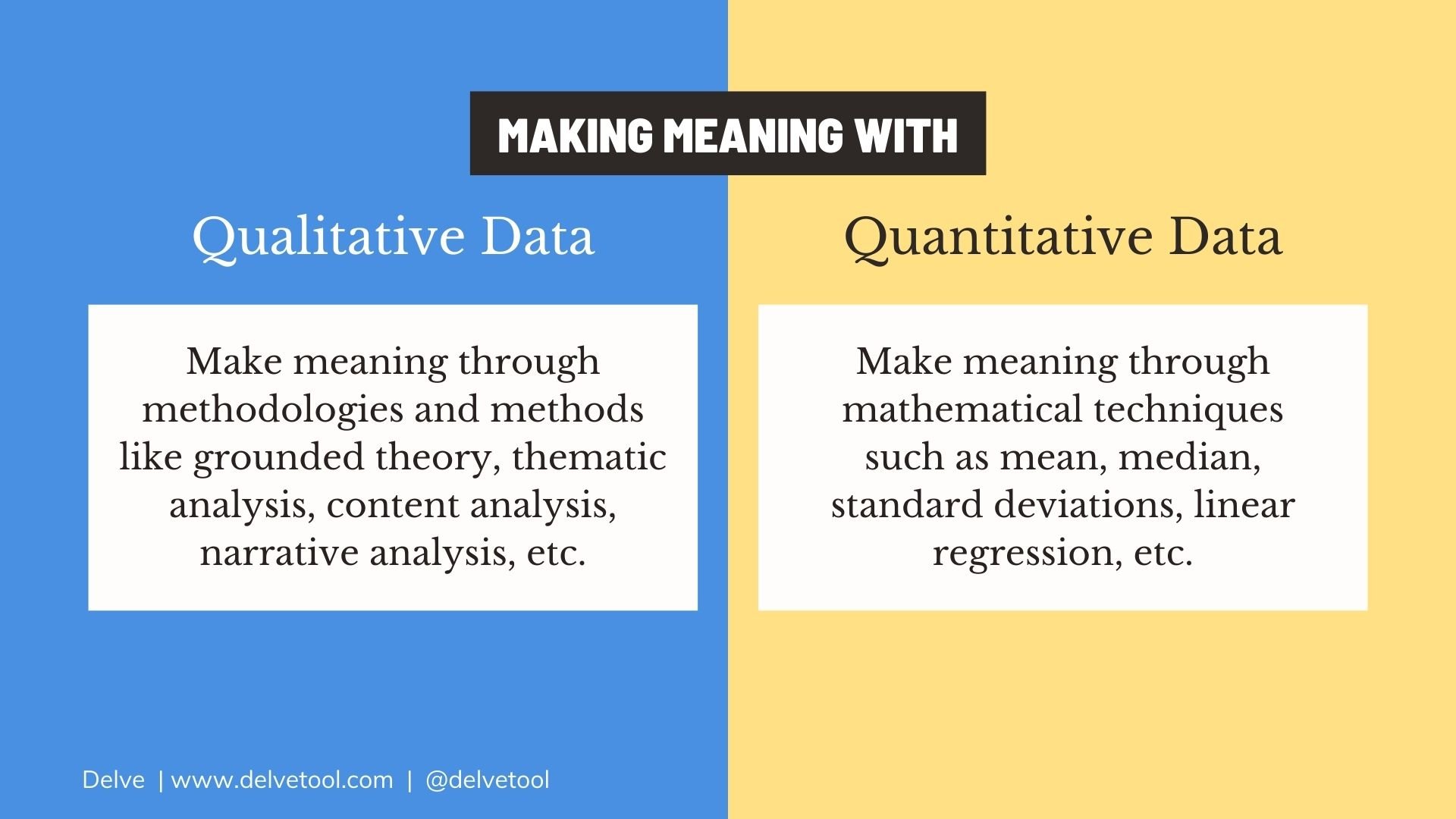Examples of Qualitative Data
What is qualitative data?
Qualitative data is non-numerical data that is produced from qualitative research methods. The following are examples of qualitative data that can be used for analysis in research.
Download Free Qualitative Data Types Slides
Submit your email to request our free qualitative data types slides with tips on what qualitative data is, examples of qualitative data, and methods for how to analyze qualitative data.
How does qualitative data compare to quantitative data?
Qualitative data is data that is descriptive and depicts qualities or characteristics, whereas quantitative data is numerical. If there were a group of people in a room, qualitative data could describe how they feel, what they look like, what clothes they are wearing, or the motivations of why they're here. Whereas quantitative data about the same group may include the number of people in the group, their age, or the temperature in the room.
Many of the blind spots of quantitative data are addressed by qualitative data.
For example, quantitative data can tell you that the test scores in a particular school district have outperformed other school districts in the surrounding area, but it can't tell you why it's happening.
Alternatively qualitative data can tell you that the educators in the high performing district have strong leadership, have high buy-in among staff members and have invested in a consistent approach to a particular style of instruction.
The combination of this quantitative and qualitative data. Can help inform changes that can improve the performance of the surrounding districts.
Examples of qualitative data
Diary accounts
Diary accounts are collected as part of diary studies. Participants record diary entries about their activities or experiences and send these back to the researcher over a period of time. These can be in the form of videos, text messages, emails, or accounts written on pen and paper.
See an example of diary accounts from Dscout’s COVID diaries project.
Documents
Documents can come in a variety of forms, whether they are public records (handbooks, policy outlines, plans, curriculums), personal documents (calendars, emails, logs), or physical artifacts (handbooks, flyers, posters, agendas)
See examples from the Achives Library Information Center (ALIC)
Case studies
Case studies are studies or investigations of a particular person, or group of people.
Photographs
Photographs are any images that are captured by camera. These can be photographs taken while in the field, photos taken of a research subject, or of their work or living space, or any other artifacts related to the subject of your research.
See example photograph collections in the NYPL Digital Collections
Audio recordings
Audio recordings can be derived from recordings of in depth interviews, focus groups, or anything recorded during observational studies. They can also be content such as podcasts, newscasts, speeches, or other recorded content.
See example audio recordings in NYPL Community Oral History Project
Video recordings
Video recordings can include footage taken from in depth interviews, focus groups, or observational studies. They can also be derived from online video content such as YouTube videos, films, news reports, or videos of events.
See film and videos in the library of congress digital collections.
Transcriptions
Transcriptions are when you have audio or video recordings and translate the speech into written text form. See our article on how to get interviews transcribed.
Descriptions
Descriptions are notes that you take to describe the quality or characteristic of something you’re observing. These can be notes you take while doing an observation or an interview.
Observations
Observations include anything that you observe with your 5 senses (sight, smell, touch, taste, hearing). It can include defined characteristics such as weight, height, age, appearance, size, etc.
Analyzing qualitative data versus analyzing quantitative data
When analyzing quantitative data, you make meaning through different types of mathematical techniques as mean, median, standard deviations, or linear regression. These methods, however, cannot be used on qualitative data, which has its own forms of analysis to extract meaning. For qualitative data, you can use methodologies and methods such as grounded theory, thematic analysis, content analysis, narrative analysis, and other techniques.
Each of these qualitative analysis techniques includes a process called qualitative coding. Qualitative coding is a common tool that allows you to interpret, organize, analyze, and structure your qualitative data for your final research report or narrative. If you want to learn how to code your qualitative data, check out The Essential Guide to Coding Qualitative Data.
If you've collected qualitative data and are ready to start your qualitative analysis, check out Delve, software for qualitative coding, you can start a free trial now.
Qualitative analysis doesn't have to be overwhelming
Take Delve's free online course to learn how to find themes and patterns in your qualitative data. Get started here.

Try Delve, Qualitative Data Analysis Software
Online software such as Delve can help streamline how you’re coding your qualitative coding. Try a free trial or watch a demo of the Delve.
Cite this blog post:
Delve, Ho, L., & Limpaecher, A. (2022, May 25). Examples of Qualitative Data. Essential Guide to Coding Qualitative Data. https://delvetool.com/blog/dataexamples
Blog changes:
Originally published on October 16, 2020.
Updated with video and additional content on May 25, 2022


